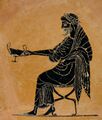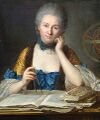Template:Selected anniversaries/December 17: Difference between revisions
No edit summary |
No edit summary |
||
| Line 51: | Line 51: | ||
File:Cherenkov high-energy literature test reactor.jpg|link=High-energy literature|1977: [[High-energy literature]] used during [[Saturnalia (nonfiction)|Saturnalia]] for the first time. | File:Cherenkov high-energy literature test reactor.jpg|link=High-energy literature|1977: [[High-energy literature]] used during [[Saturnalia (nonfiction)|Saturnalia]] for the first time. | ||
||Jürgen Kurt Moser (d. December 17, 1999) was an award-winning, German-American mathematician, honored for work spanning over 4 decades, including Hamiltonian dynamical systems and partial differential equations. | |||
||2003 – SpaceShipOne, piloted by Brian Binnie, makes its first powered and first supersonic flight. | ||2003 – SpaceShipOne, piloted by Brian Binnie, makes its first powered and first supersonic flight. | ||
Revision as of 17:47, 28 November 2017
500 BC: Dionysus gives speech which anticipates the coming of Saturnalia.
497 BC: The first Saturnalia festival celebrated in ancient Rome.
1706: Mathematician and physicist Émilie du Châtelet born. She will translate and comment upon on Isaac Newton's Principia Mathematica.
1842: Mathematician and academic Marius Sophus Lie born. He will largely create the theory of continuous symmetry and apply it to the study of geometry and differential equations.
1855: Set theorist and crime-fighter John Venn devotes himself to fighting crimes against mathematical constants.
1900: Mathematician and academic Mary Cartwright born. She will do pioneering work in what will later be called chaos theory.
1907: Lord Kelvin dies. He did much to unify the emerging discipline of physics in its modern form.
1938: Physicist Otto Hahn discovers the nuclear fission of the heavy element uranium, the scientific and technological basis of nuclear energy.
1977: High-energy literature used during Saturnalia for the first time.








